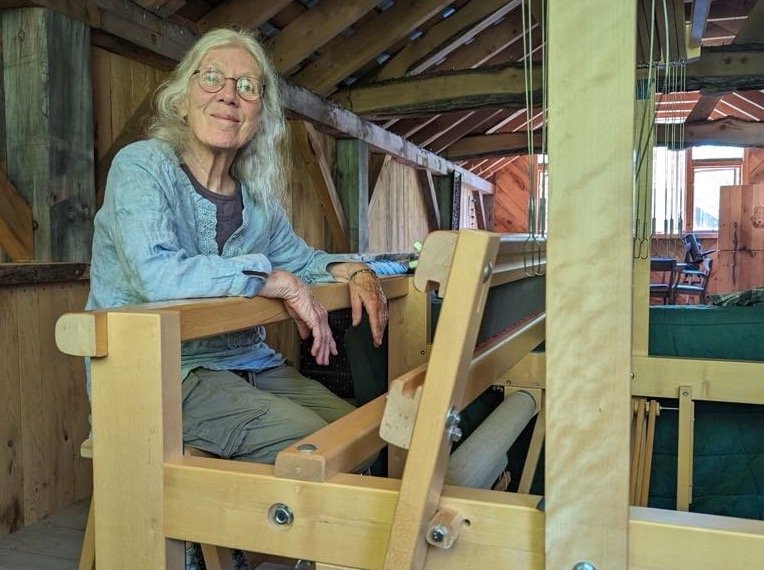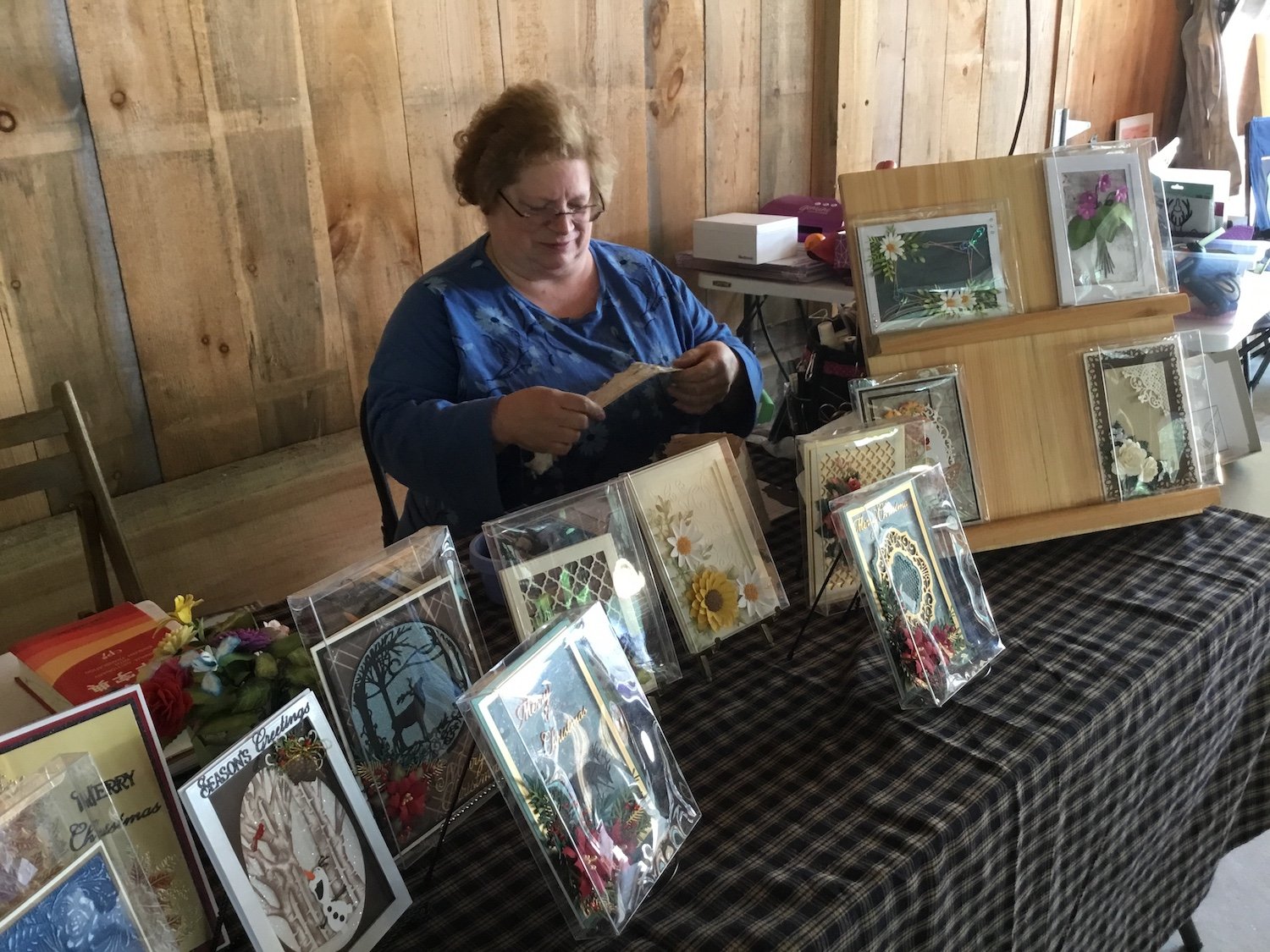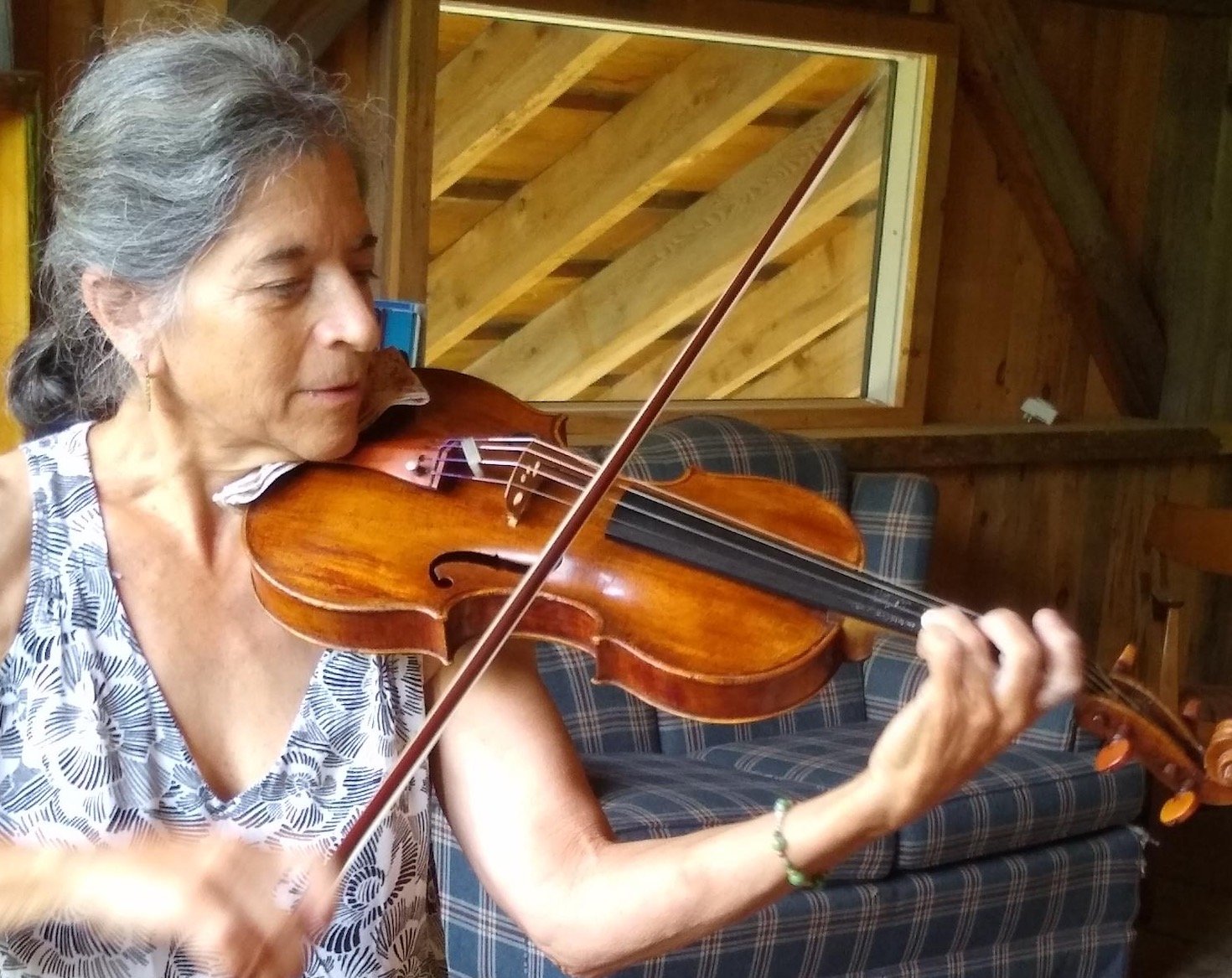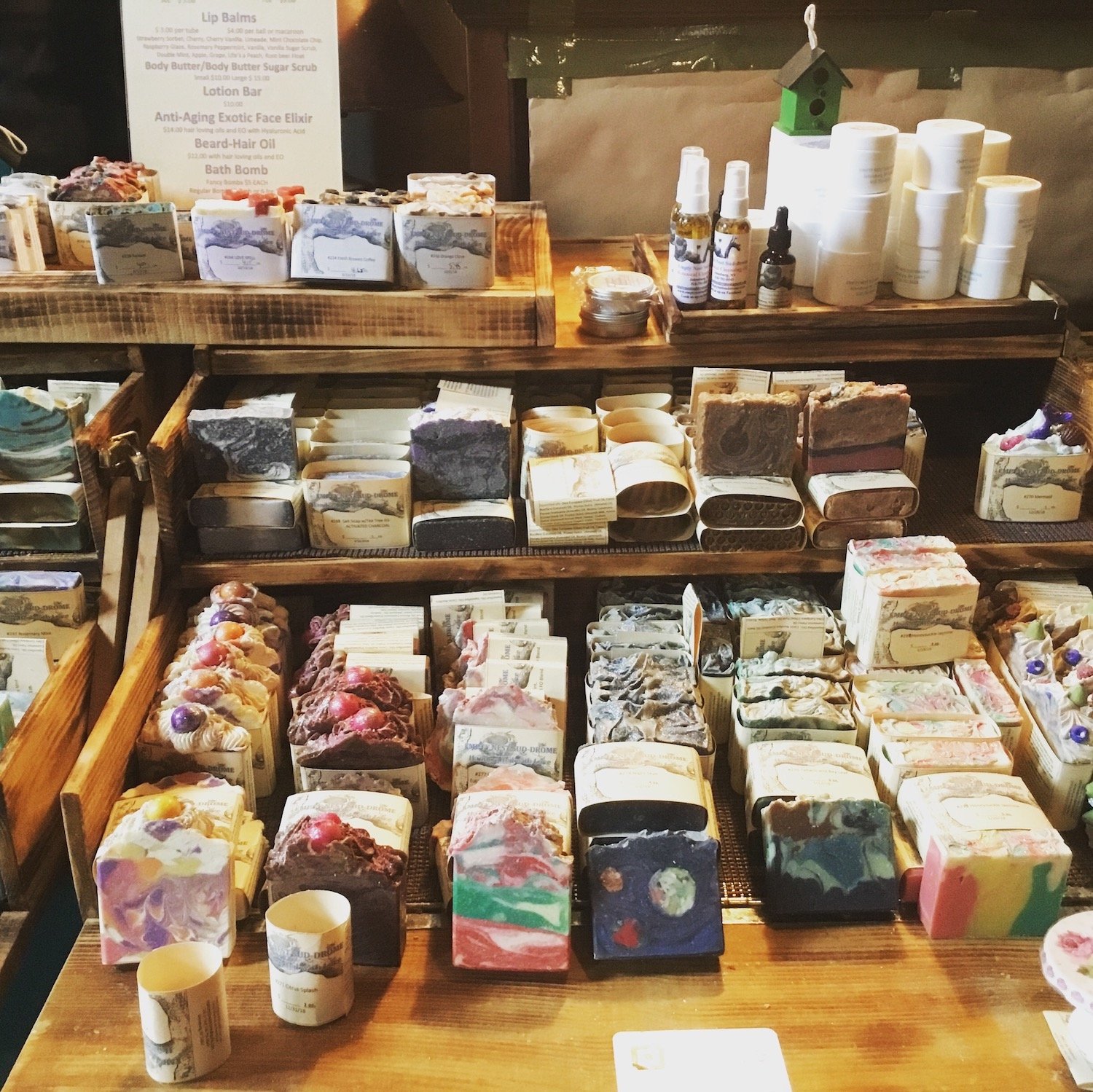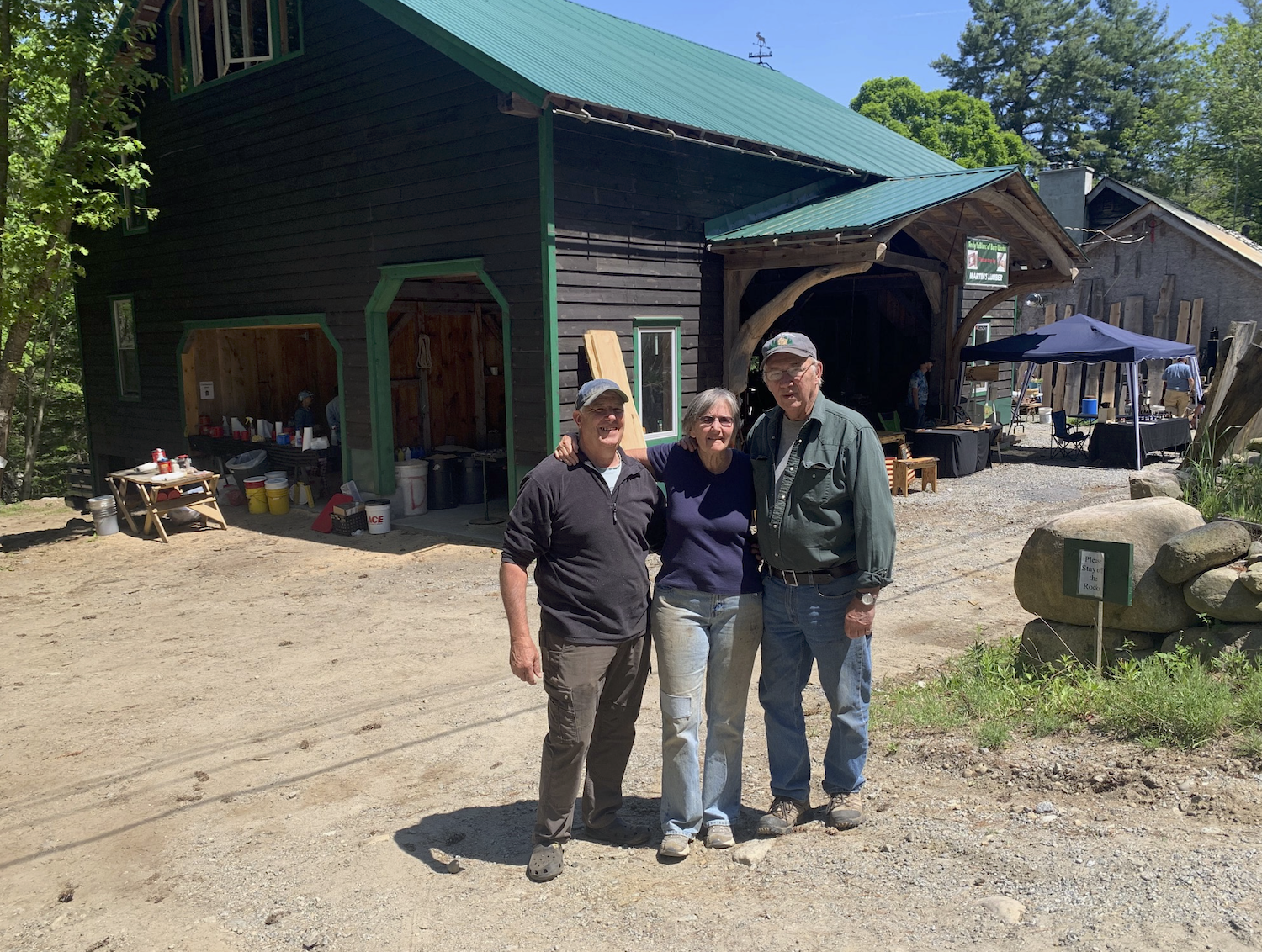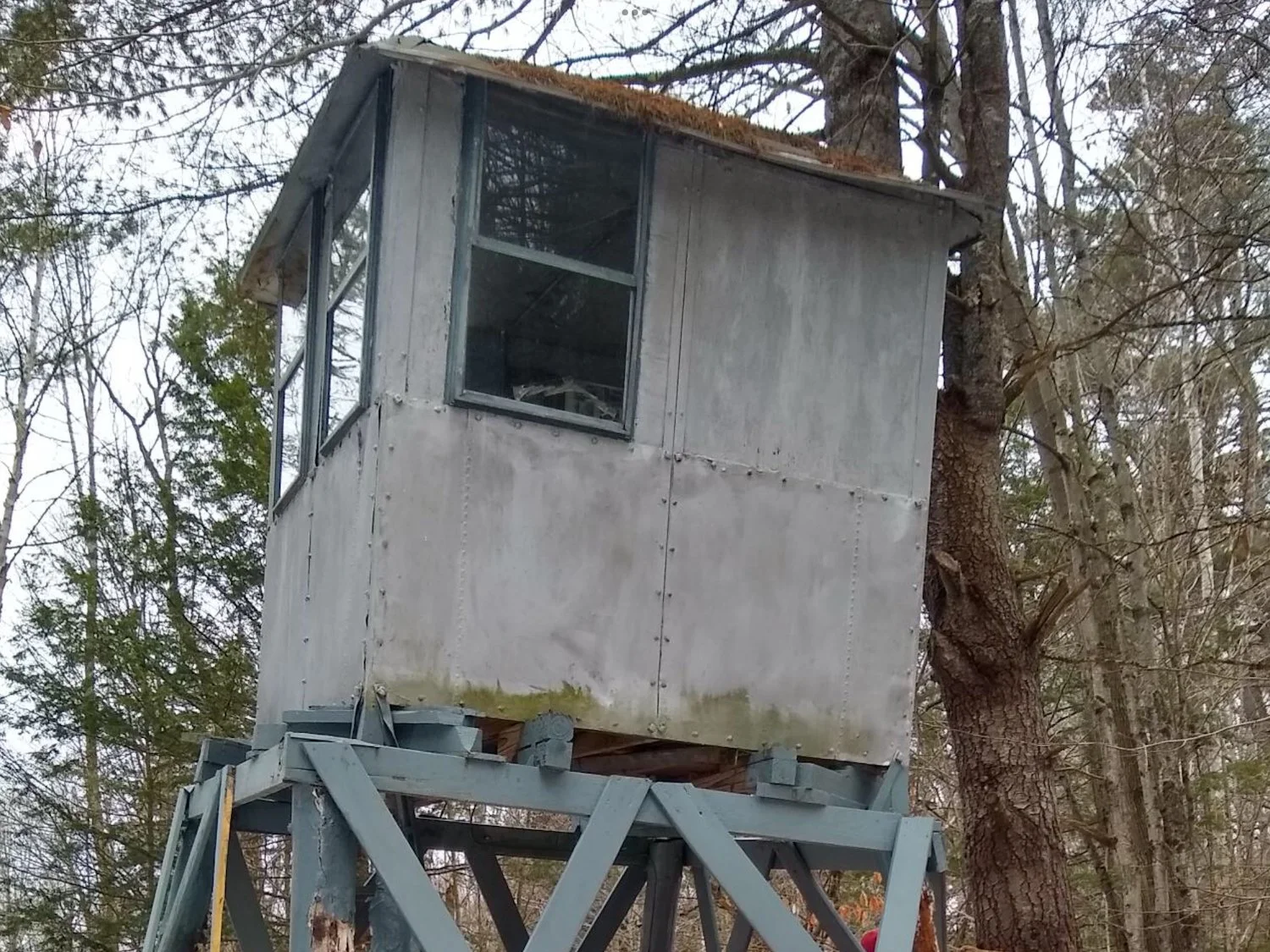Martin’s Tree Farm: New to Our Letterboxing Challenge
Andy LeBlanc, left, built this barn for Wini and Gary Martin. Note especially the timber that arches over the main entrance, then read the story Andy tells about it.
When the Warren County Planning Department needs a story in support of heritage tourism in the First Wilderness Heritage Corridor, I'm often the one they call. This time when GIS Administrator Sara Frankenfeld rang me, she said, "I have bad news and good news."
The bad news -- announced on Facebook by Marc "Tapper" Kenyon -- is that he and his wife Cheryl have sold Adirondack Gold Maple Farm, one of Thurman's oldest sugarhouses. Sadly, that means we must remove this location from our Warren County's Historian Challenge letterboxing trail.
Sara’s good news is that we have Martin's Tree Farm to spotlight as a new letterbox location deep in the forests of northwest Warren County. For an authentic window into Adirondack life, you’ll find it here in the great barn that Andy LeBlanc built 12 years ago for Gary and Winefred “Wini” Martin’s sawmill.
“The ‘H’ beams of the barn were all raised with block and tackle with the help of friends and neighbors, the smallest one being raised by our grandsons and neighbor’s boys,” says Wini, whom we met at the farm’s recent Woods Walk and Artisan Market, hosted annually on the first Saturday in June.
Even before he completed it, LeBlanc recalls, people started gathering there as though it were a kind of community center, especially for artisans.
You may enjoy the nature trails the Martins offer on their property any time, but to meet the artisans who make up this community (see below) you’ll want to visit during Thurman’s Annual Fall Farm Tour Saturday, October 12 on Columbus Day Weekend.
As a kid, LeBlanc spent a lot of time at his grandfather's farm in New Hampshire. “The barn there was always a center of activity, whether we were working or playing,” he says. “That experience stayed with me, and years later, I found myself drawn to barns. I was a carpenter by trade, but I always had this idea in the back of my mind that I wanted to work on barns.
“One day, someone asked if I could work on their barn. I didn't have much experience, but I figured I'd give it a shot. That project led to another, and before I knew it, I was specializing in barn restoration and construction. My wife's brother invited us to California, where I ended up teaching timber framing on a ranch. That experience was invaluable and helped solidify my skills.
“I met Gary and Wini Martin after restoring a large barn nearby — the huge barn at Nettle Meadow Farm. They were impressed with my work and asked if I could build a new barn for them. Gary had a sawmill and needed a permanent structure to replace a temporary one he'd been using for years. They were incredibly supportive and quickly became friends. Most of the wood for the barn came from Gary's property. We'd walk through the woods, select the trees, and he'd cut them down and mill them.”
One of the most challenging parts of this project was finding exactly the right tree to form the arch over the barn's front door. LeBlanc has an interesting approach: he talks to trees to see how they feel about being taken down.
“It's more of a non-verbal connection where I get a sense of yes or no answers,” he explains. “It's like dowsing, but without any tools—just a feeling in my body. I had asked the trees on Gary's property if there was one suitable for the arch, and I got a positive response.”
“On the day I went looking, I was in a sunny southern part of the forest when I saw a bright light in the distance. I felt drawn to it and started walking towards it, asking if this was the tree I needed. When I got close, I looked up and saw a beautiful beech tree with a perfect arch. It had a canker, which meant its life was already compromised, making it a suitable candidate for harvesting.
“We built a logging road to get the tree out,” LeBlance continues. “Gary used his skid steer to transport it, with help from Bill Good, Wini’s brother. The barn design itself was based on a traditional Dutch barn, but we modified it to fit Gary and Wini's needs. It took about nine years to complete, with breaks during the winters and times when we ran out of lumber. My sons, Zakari and Garrett, helped throughout the process. Zakari even spent seven months in France working on the timber frame section of Notre Dame Cathedral after the fire.
“The barn became more than just a building. It evolved organically with input from Gary and Wini, making it a true collaborative effort. Now, it's a central hub for their community of artisans and has even hosted some of my mushroom workshops. The whole project was a blend of traditional craftsmanship and modern needs, and it's a testament to what can be achieved when people work together with respect for both nature and heritage.”
MEET THE ARTISANS
Crane Mountain Fire Cab
“The barn draws the most amazing people,” says Wini Martin. “Through the barn we have had groups gather for meditation, mushroom classes, soft yoga, singing bowls, herb classes and a solo violinist.”
She continues:
“Friends and neighbors who join us are just as much a part of our events as we are. Without them, they wouldn’t happen. From our first June event 12 years ago, we have evolved from a sawmill demonstration, a single walk in the woods and my art to multiple walks including mushrooms, plants, trees, the country’s letterboxing route and a gallery of artists. Later this year we hope to include a walk to the Crane Mountain Fire Cab, which Andy LeBlanc will transfer from a near-by site to a platform he’ll build on a trail on our property.”
We’ll tell that story when it happens. In the meantime, meet the Martin Tree Farm artisans.




